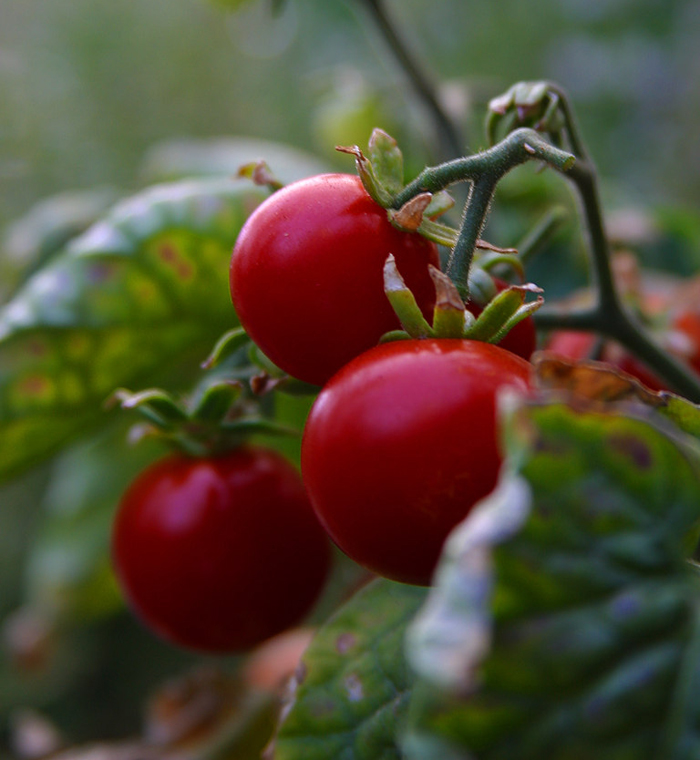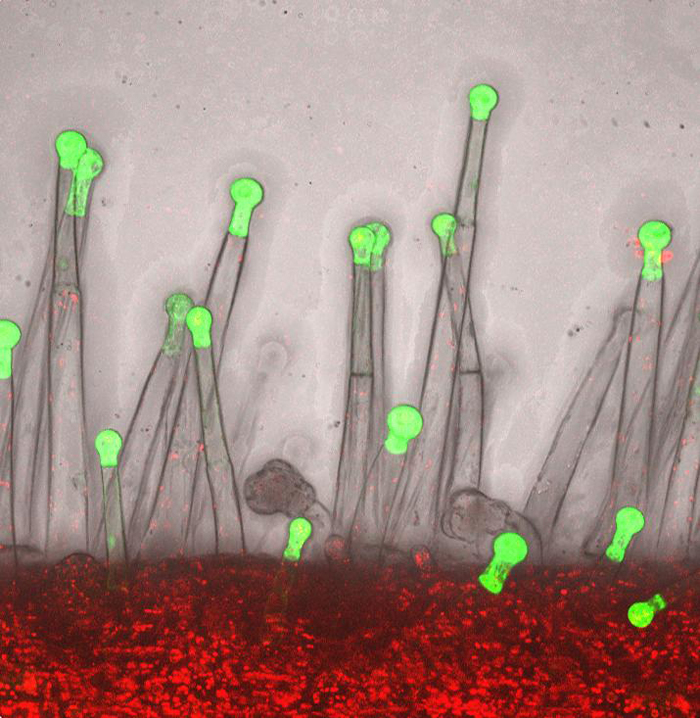Attack of the (Not So Killer) Tomatoes

This Research in Action article was provided to LiveScience in partnership with the National Science Foundation.
One of summer's most enjoyable treats is a big, juicy tomato. But consider this the next time you're in the garden: when you reach in to pluck that beefsteak off the vine yourself, you engage the plant's primary defense mechanism: A sharp, pungent aroma that is released whenever the hair cells on the tomato's leaves and stem are ruptured by any invader — whether it be human hand, a crawly insect or an oozy fungus.
Research teams led by Robert Last, Daniel Jones and Cornelius Barry of Michigan State University and Eran Pichersky of the University of Michigan recently determined how cultivated and wild varieties of tomatoes manufacture their protective chemical barrier: An enzyme known as Aacyltransferase2 (AT2) produces acyl sugars in the tips of the tomato's hair cells or other fine plant structures known as trichomes.
The researchers obtained these results by applying a combination of high-tech gene sequencing techniques and analytical chemistry to a collection of hand-picked wild tomato relatives from the Andes Mountains.
"We were especially fortunate to use the 80 accessions [genetically unique plant samples] of wild relatives collected by intrepid tomato scientists, most notably by [the late] Dr. Charles Rick from UC Davis," says Last. Rick undertook 15 expeditions to South America between 1948 and 1995 and collected 700 specimens of tomatoes native to the Andes regions of Peru, Ecuador, Chile and the Galapagos Islands.

The Andean collection allowed the researchers to study how the gene responsible for turning on AT2 production varies depending on a plant's geographic location. They found that wild tomatoes in northern locales lacked the ability to make defensive compounds, while varieties in southern regions continued to pump out the chemical barrier.
"In the north, the enzyme is not produced and the gene probably was inactivated multiple times," says Last. This suggests the AT2 production genes evolved and adapted as the wild tomato plants spread and encountered different environmental challenges. "Eventually genes die if they're not being used," Last explains. However, it appears that different pressures in the south caused the gene to actively protect the tomato from a variety of intruders.
Sign up for the Live Science daily newsletter now
Get the world’s most fascinating discoveries delivered straight to your inbox.
This work and research through the NSF-funded Solanum Trichome Project will help agricultural planners devise new strategies to protect tomato crops. Extending our understanding of natural plant pesticides and the evolution of resistance to pests offers critical data for scientists as they breed and engineer plants to ensure a more durable existence.
Editor's Note: Any opinions, findings, and conclusions or recommendations expressed in this material are those of the author and do not necessarily reflect the views of the National Science Foundation. See the Research in Action archive.










